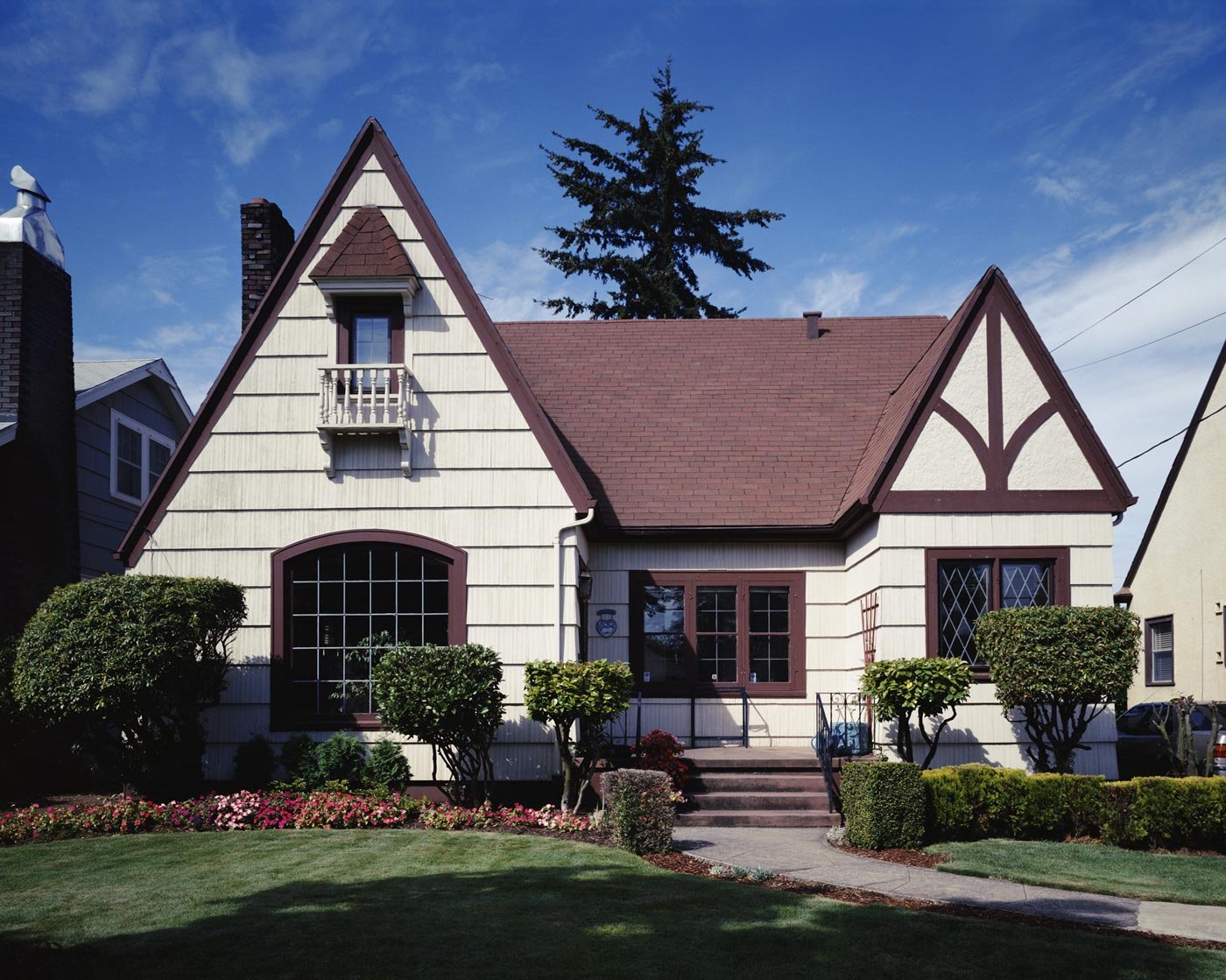#6925. Tudor Facade: Elegance in Contrasting Execution
Before us stands an excellent example of a Tudor-style residential house, showcasing the characteristic features of this expressive architectural direction. The facade is finished in light beige tones with contrasting brown accents, creating a classic combination for this style. The key feature is the pointed gables with decorative wooden elements that form the traditional Tudor-style pattern.
The house facade features an asymmetrical composition, which gives it picturesqueness and coziness. The left part of the facade is adorned with a small balcony with white railings, adding additional volume to the structure. Arched windows with frequent mullions and a diamond-shaped stained glass on the right wing of the house are another striking element of Tudor architecture, bringing elegance and historical depth to the exterior.
The roof is made of reddish-brown shingles, which effectively contrasts with the main color of the facade. It's interesting to note how the facade design organically combines elements of various textures: wooden cladding, stucco, and brick chimney masonry, creating a visually rich yet harmonious composition.
A concise porch with low steps and metal railings leads to the entrance door, framed by windows. The landscape design of the plot emphasizes the architectural attractiveness of the house: a neat lawn, trimmed shrubs, and bright flower beds create a well-groomed appearance and frame the structure.
When designing your own house in a similar style, it's worth paying attention to these key elements: contrasting color schemes, decorative wooden elements on the gables, a variety of window shapes, and finishing materials. This approach will allow you to create a house with character, referring to historical European traditions, but at the same time quite modern and functional.
